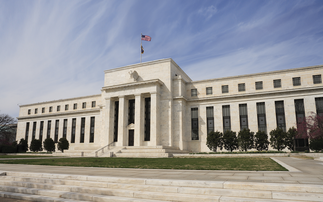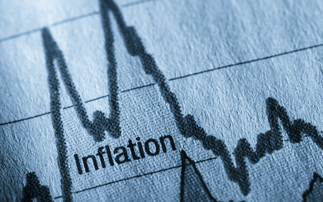Paul Burgin charts the main events of 2010, including the flash crash, a rush to gold and the emergence of new fund structures
Assets soar
The ETF industry started 2010 in good cheer. BlackRock reported global industry assets passing the $1trn barrier as the year got under way. Growth in 2010 is likely to be lower than the 45.2% increase posted in 2009. Latest figures point to a 19.6% year-to-date rise to the end of October.
BlackRock also reported global average daily trading volumes up by one fifth at $60bn. Asia ex-Japan and Latin American exchange volumes rose even faster, as investors latched onto the emerging market theme.
iShares remains the clear winner in assets under management (AUM). In April the firm announced AUM had passed $500bn, just in time for its tenth anniversary.
Other players have not been left behind. Of the largest 25 providers, Vanguard saw the biggest growth in global market share. ETF Securities and other exchange-traded commodity (ETC) providers experienced strong inflows throughout the year, although volatility often caused investors to pull out just as quick.
In absolute terms, the number of ETFs listed in Europe continues to surge ahead of the United States. A warning from the Securities and Exchange Commission (SEC) in 2009 about leveraged and inverse products, along with the current review of derivative usage by mutual funds and ETFs, has muted enthusiasm for new and exotic State-side listings for the time being.
Going for gold
‘Gold is the new gold’ sounds like a headline from a Sunday newspaper supplement. The precious metal also grabbed plenty of financial headlines during the year as investor demand soared.
The World Gold Council (WGC) registered record gold ETF inflows in the second quarter, equivalent to 273.8 tonnes. WGC says the total holdings in physically backed ETFs stood at 2,070 tonnes at the end of the third quarter.
Commodities may have stolen the spotlight, but certainly not all the assets. Commodity ETP assets account for just 3% of global ETP totals, despite jumping 46% year-to-date.
Equities continue to dominate both global AUM and turnover, helped along by the 41% increase in emerging markets assets. The biggest jump in dollar terms goes to alternatives, up 3,600% according to BlackRock. However, mainstream index-tracking ETF providers need not worry – alternative assets stand at just $1.9bn, or 0.2% of the global total.
Competition and price
The debate over synthetic versus physical replication has, to an extent, been rendered obsolete this year. In Europe, the industry is embracing both forms of replication, citing the benefits of both in tracking different markets.
iShares broke the habit of a lifetime by entering the multi-counterparty swap-based market, obscuring the line between the two camps and pitching a third, rather than erasing the line altogether.
Synthetic ETFs continue to dominate the European marketplace. Investors are being urged to look under the bonnet at how well these products replicate and to consider counterparty risk. Traditionally replicated funds are also coming under greater scrutiny, in relation to securities lending practices in particular.
The likes of EasyETF suggest investors go one step further with optimised products rather than blend cash and swap-based methodologies. Credit Suisse widened the market for its ‘new generation’ of cash and synthetic offerings by listing products in London.
Not surprisingly, investors remain concerned about counterparty risks and what happens if the swap provider fails. That has prompted iShares, Lyxor, db x-trackers, Credit Suisse and smaller players to update their websites daily with details of their collateral baskets required under Ucits (Undertakings for collective investments in transferable securities) regulation. Other providers will not be able to avoid greater disclosure for much longer.
Bradley Kay, associate director of European ETF research for Morningstar, says: “2010 marked a maturation of synthetic replication vehicles. We are getting to the point where providers are treating all investors like their biggest institutional customers.”
He believes that collateral and reset information will help the market get a qualitative feel for the underlying liquidity of equities or lower duration fixed income collateral. It should also overcome concerns about ‘window dressing’ at reset dates.
New products continue to flood the market. Existing issuers increased their ranges and 25 new providers joined the fray. Over 500 ETFs were listed in the first ten months of this year. BlackRock reports a further 1,000 are currently planned.
Société Générale Asset Management’s (SGAM) products were merged into Lyxor in June, followed by a flurry of new listings across Europe for the enlarged group.
Bric (Brazil, Russia, India and China) listings were also popular. HSBC, Credit Suisse, ComStage and a host of smaller players listed a total of 121 emerging market products globally in the first ten months of the year.
Kay says: “We experienced less new product innovation this year, but saw a lot of new providers. Anyone who did not have an emerging market ETF launched one.”
Asset management
When it comes to assets under management, the ETF industry remains a minnow alongside traditional mutual funds, whose assets stand at $21.5trn according to Cerulli Associates.
That gap is slowly narrowing. Global mutual fund assets remained under their 2007 peak as rapid growth in Latin America failed to offset weak inflows in Asia, North America and Europe.
What has changed is fund manager attitudes to ETFs. The strong beta runs from last year’s market lows forced many to seek cheap alternatives to expensive stock-picking strategies. Fund-of-fund managers appeared particularly keen, especially those geared towards specific discretionary mandates.
Funds of ETFs are popular in the US and are gaining ground in Europe. Advisers and clients are willing to pay for asset allocation but balk at standard funds-of-funds fees when active managers add little in the way of alpha. Db x-trackers is considering tweaking its German ETFs of ETFs for the UK market.
Absolute return and newcits funds are also an emerging source of business. As hedge funds rush to secure new distribution flows and circumvent the recently passed Alternative Investment Fund Managers Directive, many are re-modelling themselves in Ucits form. With the emphasis on liquidity, ETFs seem an obvious fit for popular long/short and multi-asset strategies.
These fast growing funds could help push the ETF share of European mutual funds up from 3% towards the 6% share they enjoy in the American mutual fund market.
Flash crash
On 6 May, American stock prices plummeted in a ‘flash crash’ that wiped almost 1,000 points off the Dow Jones Industrial Average index – its largest ever intra-day fall. ETFs were disproportionately affected as market makers suspended their activities to ascertain the cause of pricing irregularities for underlying stocks, according to the Securities and Exchange Commission (SEC).
European exchanges say it could not happen here. The London Stock Exchange and Deutsche Borse insist their circuit breaker mechanisms are robust. A report issued in November by the Kauffman Foundation claimed that the proliferation of ETFs ‘poses systemic risks’, increasing the likelihood of more flash crashes and market instability.
Morningstar’s Kay thinks European investors have little to fear from flash crashes. He says: “Most of the flash crash falls can be entirely attributed to retail orders based on stop losses. Over-the-counter investors do not need to worry as their trades are based on human interaction. Europe has nowhere near the extent of high frequency trading or retail base involvement of stop losses seen in the US.”
Regulatory developments
This year has seen a flurry of regulatory attempts to improve supervision of the financial and banking systems. Although most efforts and contention centered on the hedge fund and private equity industries, as well as investment bank disclosure and solvency (through the Basel III initiative), ETFs did not escape completely.
Of most immediate concern is the FACTA tax reporting provisions in the recent HIRE Act approved by the US Congress. From January 2013, a 30% withholding tax on gross proceeds and income will apply to holdings in US assets by foreign funds and fund managers, unless they agree to join the American tax reporting system.
The industry awaits clarification of the full implications of the Act. For the time being it appears that holdings of US ETFs by non-US investors will be caught by the tax should their intermediaries refuse to comply with FACTA.
More regulation next year?
On the sales side, retail has yet to feel the full brunt of EU and national pushes to improve levels of advice. The UK’s Retail Distribution Review (RDR) is being keenly watched by regulators in the Netherlands, France and elsewhere. The RDR aims to eradicate commission bias by 2013, putting ETFs on a level footing with their mutual fund counterparts, which currently pay advisers to sell their wares. Australia also looks set to ban commission in a similar manner.
The Mifid (Markets in financial instruments directive) review and Prip (Packaged retail investment products) initiative are also underway. The Mifid review may force more business on to exchanges and enforce greater transparency and best execution. The future Ucits IV directive may increase custodial liabilities and responsibilities. Just how the proposed European-wide Ucits investor protection scheme will apply is unclear.
The Prip project is also of interest to the ETF industry. It is the first attempt at horizontal rather than vertical legislation to standardise disclosure on all retail products – ‘if it looks like a retail investment, it is one’ is the basic European Commission thinking. The life industry says extending the mutual fund Key Information Document to their products is fraught with difficultly. The ETF industry is more sanguine.
This article was first published in our sister title ETFM





